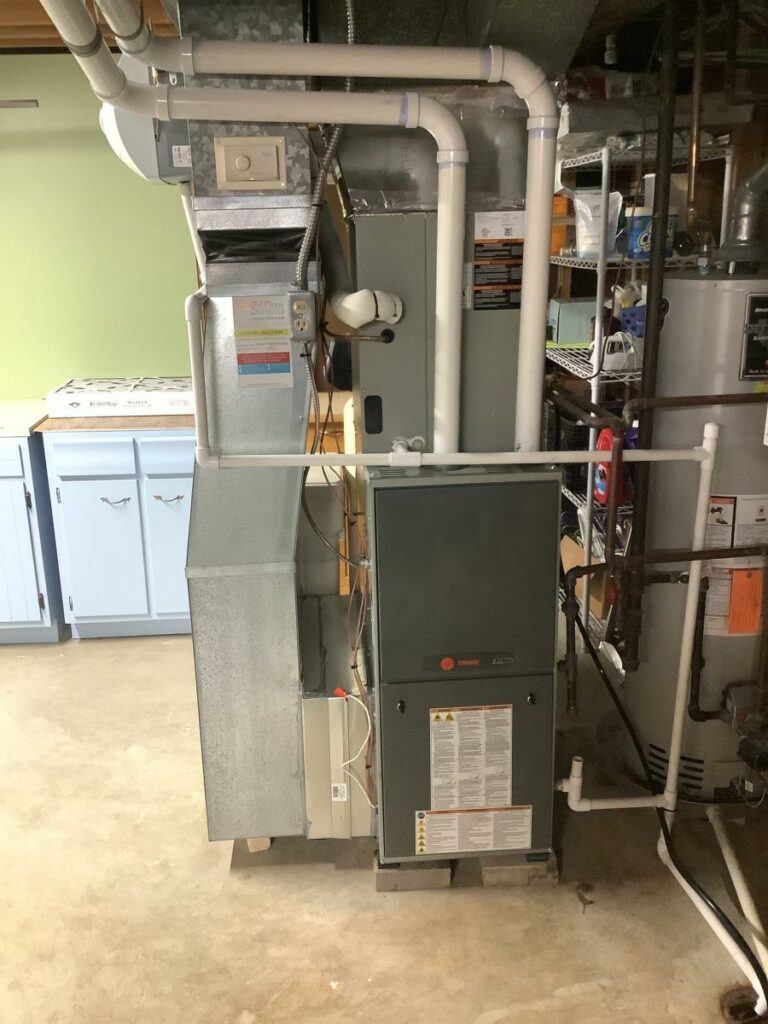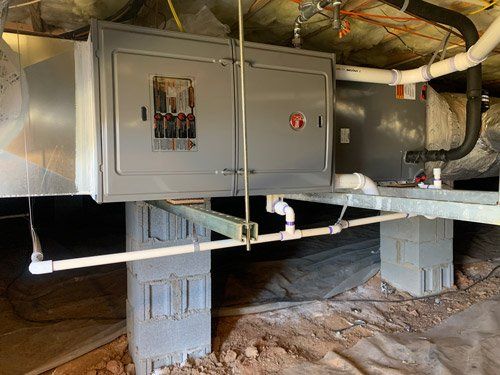Heating company services for warmth and efficiency: Get your furnace inspected today
Heating company services for warmth and efficiency: Get your furnace inspected today
Blog Article
The Ultimate Guide to Furnace Installation for a Cozy Home
Heating system installation is an important facet of preserving a comfortable home setting, especially during the cooler months. Comprehending the various kinds of heating systems available and the value of choosing the appropriate dimension can significantly influence both effectiveness and comfort degrees. Moreover, a detailed setup process, matched by the right tools and materials, ensures ideal efficiency. This guide aims to outfit house owners with the expertise needed to make enlightened decisions and execute reliable maintenance methods. As you take into consideration these elements, the concern continues to be: what steps can you take to guarantee your furnace serves you well for many years ahead?
Types of Heating Systems
When taking into consideration furnace installation, comprehending the different sorts of heaters readily available is crucial for making an informed decision. The main kinds of heating systems include gas, electric, and oil heating systems, each offering unique benefits and factors to consider.
Gas heating systems are one of the most typical option because of their performance and reduced functional expenses. They use gas or lp, offering quick heating and consistent performance, making them perfect for colder climates.
Electric heaters, while usually less complicated to mount and keep, have a tendency to have higher operational costs. They are often preferred in locations where gas service is not available or for homes with existing electric framework.
Oil heaters, though much less typical today, remain a viable alternative in particular regions. They burn home heating oil, which can be useful during colder months, yet their dependence on oil shipment poses possible difficulties.
Additionally, there are high-efficiency versions offered across these types, which can substantially lower energy usage and energy expenses. Inevitably, understanding these heating system types will certainly assist property owners choose a system that straightens with their heating requires, budget plan, and power preferences.
Picking the Right Dimension
Selecting the proper dimension for a heater is crucial to making sure optimum efficiency and power efficiency. An undersized furnace will have a hard time to preserve comfy temperature levels throughout the cool months, bring about increased wear and tear, higher energy bills, and potential system failure. On the other hand, a large heating system may cycle on and off as well often, leading to inefficient heating and unequal temperature circulation within the home.

Heating system dimensions are usually gauged in British Thermal Systems (BTUs), which show the amount of power required to heat up a room. It is recommended to speak with a qualified cooling and heating professional that can perform the required estimations and recommend a suitably sized unit. furnace repair. Buying the appropriate furnace size not just boosts comfort however additionally contributes to long-lasting power financial savings and system reliability
Setup Refine Overview
Once the proper heater dimension has been identified, the following action entails understanding the setup procedure. This procedure normally begins with an extensive assessment of the installment website, including the existing ductwork and ventilation systems. Proper preparation is important to make certain smooth integration and optimal performance of the new heating system.
The setup normally consists of separating the old device, which entails securely getting rid of any kind of electric links, gas lines, and ductwork affixed to the previous heater - furnace repair. As soon as gotten rid of, the brand-new heater is very carefully positioned and leveled, ensuring that it meets the manufacturer's specifications for optimum procedure
Next, the installer will certainly attach the needed gas and electric lines, adhering to local codes and safety regulations. Following this, ductwork might require to be customized or replaced to accommodate the brand-new system, making certain reliable air flow throughout the home.

Necessary Tools and Products
Gathering the necessary tools and products is essential for an effective furnace setup. Proper preparation makes certain that the setup procedure is efficient and lessens the potential for errors.
Trick tools needed consist of a drill, screwdrivers, wrenches, pliers, and a level. A multimeter is necessary for electric connections, while a pipeline cutter and flexible wrench are necessary for gas line setup. In addition, a measuring tape and a stud finder will certainly aid in guaranteeing precise placement and safe and secure fastening of the heating system.
In regards to products, you will certainly need ductwork, insulation, and sealing tape to make sure optimum airflow and energy effectiveness. It is additionally important to have a new heating system filter handy, in addition to airing vent helpful hints materials, such as PVC pipe or metal flue, depending upon the sort of heater being mounted.
Safety equipment, including gloves, goggles, and a face mask, is likewise important to shield versus dirt and particles throughout installment. Having all these devices and products conveniently offered not just streamlines the procedure but also enhances the safety and effectiveness of the furnace installation.
Maintenance Tips for Long Life
To make certain the long life of your heater, it is necessary to implement a normal upkeep timetable that attends to crucial elements of the system. Start by replacing or cleaning the air filter each to 3 months, as a stopped up filter can restrict airflow and decrease performance. Furthermore, check and clean the blower assembly to avoid dirt build-up that can hinder efficiency.
Next, inspect the thermostat settings and alter if necessary to make certain precise temperature regulation. Check the ductwork for leaks or blockages, as this can lead to power loss and unequal heating. Frequently lubricate the electric motor and bearings according to the maker's recommendations to decrease deterioration.
Professional examinations must occur each year, where a qualified technician can evaluate the heating system's overall problem, check for gas leaks, and ensure that security features are working correctly. Lastly, consider setting up a programmable try this thermostat to optimize energy usage and preserve regular home temperatures. By taking on these maintenance methods, you can boost your furnace's effectiveness, expand its lifespan, and eventually appreciate a comfortable and comfy home setting.
Conclusion
Efficient heater installation is important for attaining optimal home comfort and power performance. Understanding various heating system kinds and picking the appropriate size guarantees appropriate capability (furnace repair). A meticulous installation process, supported by the right tools and products, adds dramatically to the system's performance. discover this Furthermore, regular maintenance plays an important function in extending the life-span of the heater. Following these standards cultivates a cozy and welcoming living room, crucial for sustaining the obstacles of cooler months.
Report this page